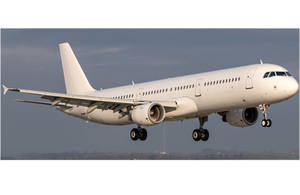AAIB Formal Report: G-POWN, Engine malfunction after takeoff from London Gatwick Airport
The AAIB has published a Formal Report into a serious incident involving an Airbus A321-211 (registration G-POWN) at London Gatwick Airport on 26 February 2020.

As part of scheduled maintenance overseas, G-POWN underwent a biocide shock treatment on its fuel system, using Kathon biocide, to treat microbial contamination. Once the maintenance was complete, the aircraft returned to the UK on 24 February 2020.
In the 24 hours preceding this serious incident, there were abnormalities with the operation of both engines across four flights. On the flight before the incident flight, the crew reported momentary indications of a No 2 (right) engine stall. After the aircraft landed, this was investigated using an inappropriate procedure obtained from an aircraft troubleshooting manual not applicable to G-POWN, but no fault was found.
On the incident flight the aircraft took off from London Gatwick Airport Runway 26L at 0009 hrs on 26 February 2020 but, at around 500 ft above ground level, the No 1 (left) engine began to surge. The commander declared a MAYDAY and turned right downwind for an immediate return to the airport but, shortly afterwards, the crew received indications that the No 2 engine had stalled. The crew established that the engines were more stable at low thrust settings and the thrust available at those settings was sufficient to maintain a safe flightpath. They continued the approach and the aircraft landed at 0020 hrs.
The investigation identified that:
-
G-POWN’s fuel tanks were treated with approximately 38 times the recommended concentration of Kathon.
-
The excessive Kathon level in the aircraft’s fuel system caused contamination of the engine Hydro Mechanical Units (HMU) resulting in a loss of correct HMU regulation of the aircraft’s engines.
-
A troubleshooting procedure was used for the engine No 2 stall that applied to a different engine than the one fitted on G-POWN. The correct procedure required additional steps that would have precluded G-POWN’s departure on the incident flight.
Safety Recommendations:
A Special Bulletin about this incident was published by the AAIB in April 2020.
Following this serious incident, Safety Action was taken by regulators, the International Air Transport Association, the manufacturers of the aircraft, engines and biocide, the maintenance organisations involved, and the operator.
Five safety recommendations are made in this report to the Civil Aviation Authority (CAA) and European Union Aviation Safety Agency (EASA).
Crispin Orr, Chief Inspector of Air Accidents said:
“This was a very serious incident that in different circumstances could have had a catastrophic outcome. The safety of commercial air transport aircraft depends in part on redundancy of safety critical systems such as engines. However, fuel contamination can affect all engines simultaneously and so it is essential that maintenance regimes are resilient to errors that could lead to fuel system contamination.
“Five Safety Recommendations have been made in this report to regulators to promote the classification of biocide treatment of aircraft fuel systems as a critical maintenance task. This would ensure that an error-capturing method is included as part of the task.”
Media enquiries call: 01932 440015 or 07814 812293